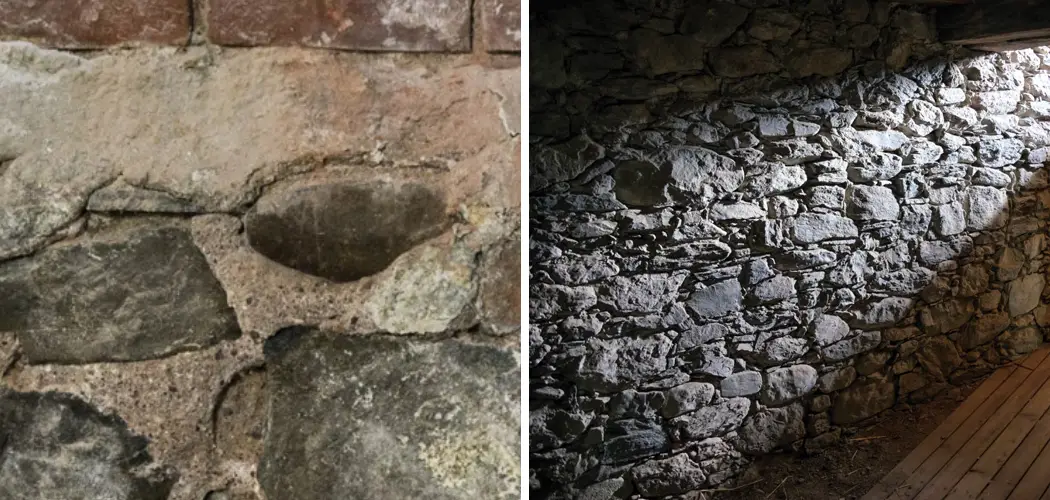Are you dealing with leaks and water damage on your basement walls? You must know how to waterproof stone basement walls. Whether it’s caused by a plumbing issue, heavy rainfall, or flooding, having water seeping through your stone basement walls can quickly become a major problem.
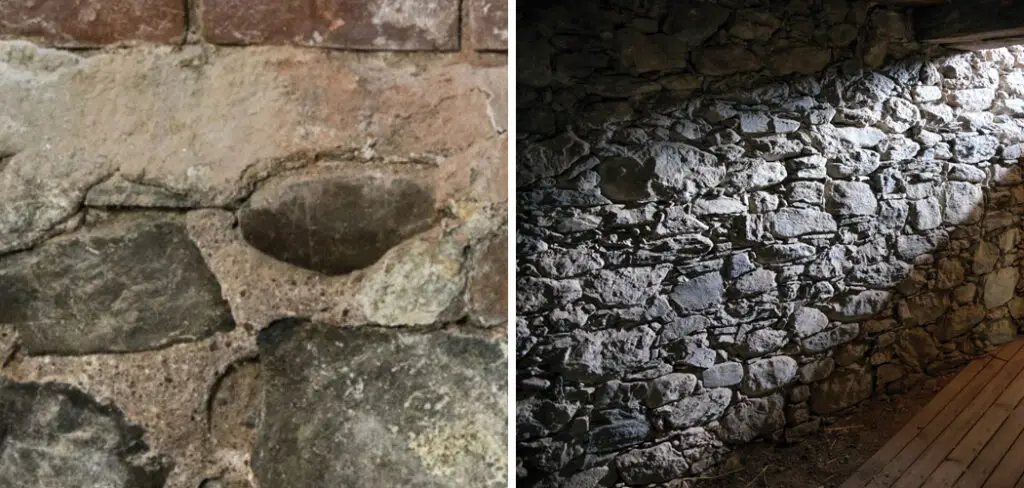
Luckily, there are waterproofing solutions available that can help seal your basement against water intrusion. In this blog post, we’ll take an in-depth look at how to protect these wall surfaces from moisture using specialized coating materials and effective sealing products. Read on as we explore the steps involved in waterproofing stone basement walls!
Tools You Will Need
- Masonry putty
- Floor patching compound
- Trowel
- Paintbrush
- Waterproof sealant
- Brush
- Roller
5 Steps Guide on How to Waterproof Stone Basement Walls
Step 1: Inspect Your Basement Walls
Proper waterproofing of your stone basement walls is essential in preventing leaks and floods. Regular inspections can help you identify issues with water infiltration that could be damaging the foundation of your home. Start by looking out for common signs such as the presence of mold, discoloration, or cracks in the walls.
Make sure to also pay attention to any wet spots outside your house which may indicate a leak within the foundation. To ensure that your basement walls stay dry and tight, use a high-quality sealant on them regularly and consult an experienced professional if you find something concerning. Taking these extra steps today will save you more headaches in the future.
Step 2: Fill Cracks and Holes
Waterproofing stone basement walls is incredibly important to preventing water damage and is a DIY project that can be done in one afternoon. The first, and arguably most important step, is to fill any cracks or holes with an epoxy resin or concrete repair compound. Just like caulking the windows keeps air out of the house, the same concept applies to water.
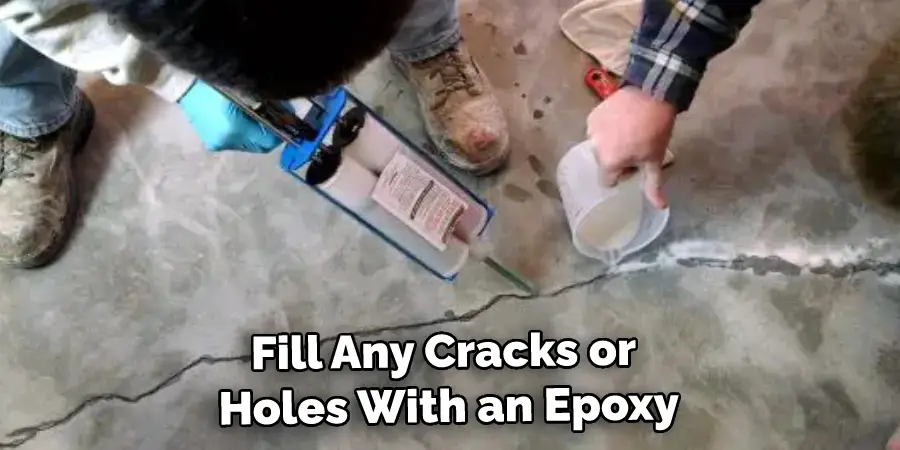
Once there are no structural anomalies in the wall, you will want to apply a waterproof sealant over the stones. This will usually come as a paintable acrylic substance that creates an impermeable barrier against moisture. The final result should be noticeably more resistant to seepage compared with before it was sealed!
Step 3: Apply a Waterproof Sealant
Although it may seem like an intimidating task, sealing stone basement walls can be quite simple. First, you’ll need to start by cleaning the walls with a damp cloth or vacuum to help remove dust and dirt buildup. Then, you’ll want to apply a waterproofing sealant specifically designed for stone surfaces.
Waterproofing stone basement walls is an essential step in protecting your home from water damage and stains. Applying a waterproof sealant to these surfaces can help to protect the walls from moisture and keep them looking great for years to come.
Let the sealant dry completely before reapplying any coats of paint or wallpaper. Following these easy steps will ensure that your stone basement walls are well-protected from water damage and staining, preserving their beauty and integrity for a long time!
Step 4: Paint the Walls
Painting the walls is a great way to waterproof your stone basement walls. Interior latex and masonry paint provide a waterproof barrier against moisture, helping to keep the walls of your basement dry. The first step is to power clean the wall so that you have a cement surface free of dirt and oil. Then apply two coats of sealant, using a roller or brush.
Add two coats of paint to complete your project. With this simple coat of paint, you can maintain a healthy environment in your stone basement and ultimately protect yourself and your family from potential water damage and mold growth.
Step 5: Monitor Your Basement Walls
Waterproofing your stone basement walls is essential in ensuring that your home’s foundation remains well-protected. Monitor your stone basement walls for any visible signs of wear and tear, including cracks, watermarks, or efflorescence (salt deposits).
If these signs appear on the walls, take action right away. You can waterproof them with an epoxy sealant which will provide deeper penetration and greater protection which can be stronger than traditional mortar and masonry paint covers.
Don’t wait till water seepage has started to appear – be proactive to avoid it! Make sure you properly monitor your basement stone wall waterproofing over time to ensure that any potential damage is avoided or addressed quickly!
With regular maintenance and the right waterproofing products, you can protect your stone basement walls from water damage. Follow the steps outlined here to create a long-lasting seal that will keep your basement dry and safe for many years to come. Good luck!
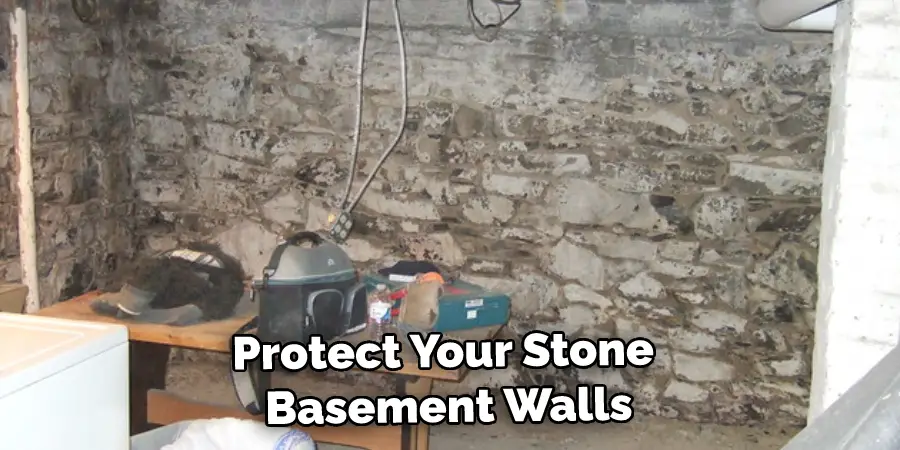
Tips to Waterproof Stone Basement Walls
1. Before you begin waterproofing your stone basement walls, it is important to inspect them for any cracks or holes. If you find any cracks or holes, you will need to repair them before waterproofing the walls.
2. Once you have repaired any cracks or holes, you will need to clean the walls. You can do this by using a mild detergent and a sponge. Be sure to rinse the walls thoroughly after cleaning them.
3. After the walls are clean and dry, you will need to apply a waterproofing membrane. This can be done with a brush, roller, or sprayer. Be sure to follow the manufacturer’s instructions when applying the waterproofing membrane.
4. Once the waterproofing membrane has been applied, you will need to apply a sealant. This can be done with a brush, roller, or sprayer. Be sure to follow the manufacturer’s instructions when applying the sealant.
5. After the sealant has been applied, you will need to apply waterproofing paint. This can be done with a brush or roller. Be sure to follow the manufacturer’s instructions when applying the paint.
How to Create a Long-Lasting Seal on Stone Basement Walls?
Sealing the basement walls of a stone home is an important step in protecting against mold, mildew, and water leakage. The first step to creating a long-lasting seal is to thoroughly clean the surface of all debris, dust, and dirt. This ensures that any paint applied adheres properly and doesn’t crack or peel away over time.
Next, it’s important to apply an epoxy-based primer before painting as this provides an additional layer of protection to the stone wall from moisture. Once the primer has dried completely, use a waterproofing masonry paint for the best results. Finally, cover the entire surface evenly with multiple coats of paint until the desired look is achieved – be sure to allow plenty of time for each coat to dry properly before applying another. With these steps detailed, you can create a seal on your stone basement walls that will last for years!
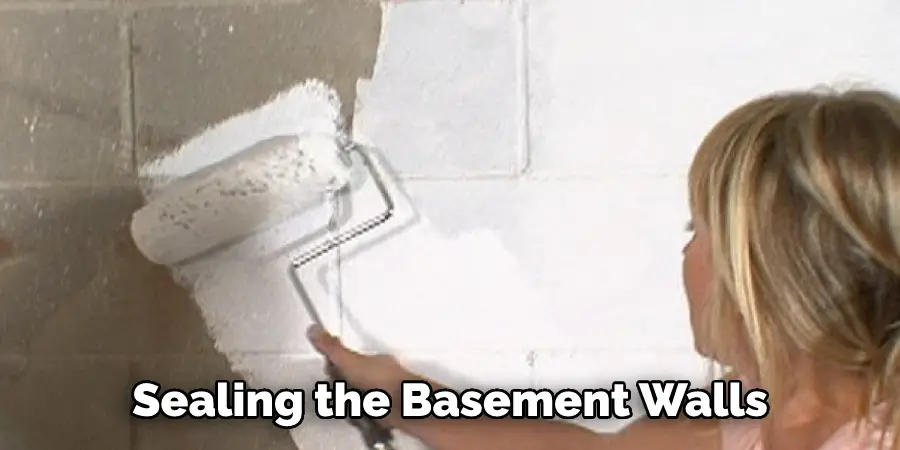
How to Protect Your Home with Proper Waterproofing of Your Stone Basement Walls?
Having a stone basement can be a bonus to any home, however, not waterproofing it correctly can lead to a string of issues like mold and pests. Making sure your stone basement is properly waterproofed should be a top priority; this will help keep your basement dry and eliminate the risk of rot.
First, start with the exterior walls of the basement where water from the outside may seep in. Make sure the outside area near and around your basement is clear of debris and if necessary, place a pitch on it so rainwater can flow away from the house. Additionally, you should have your gutters in good condition – even with no visible cracks – because water escaping from them can wreak havoc on your stone foundation over time.
Furthermore, make sure to check that all pipes are airtight as well as there should be no holes or gaps within any pipes leading into or out of the stone walls. Finally, consider adding a waterproof coating on both interior and exterior walls to serve as an additional barrier against moisture. Taking proper care when waterproofing your property will give you peace of mind and save you money in the long run!
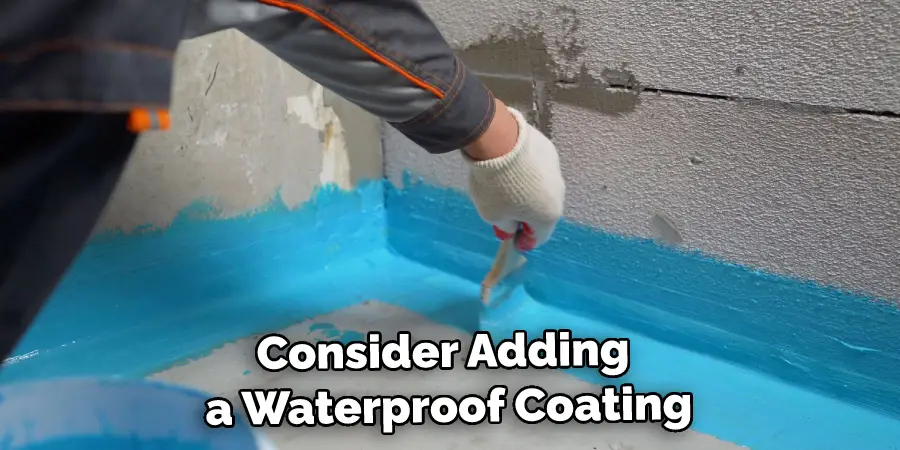
How to Prevent Damage from Unprotected Stone Basement Wall Surfaces?
Homeowners with stone basement walls are likely to discover after some time that their wall surfaces are gradually deteriorating due to exposure to moisture, mold, dust, and perhaps even animals. While stonework is a very hardy material, it’s not completely impervious to damage and can quickly degrade without proper protection.
Fortunately, there are a few simple methods for preventing damage before it becomes too severe. Applying a sealant or waterproofing treatment made especially for stone materials will help keep out water and debris, while regular cleaning of the surface will help prevent the buildup of mold.
Additionally, if homeowners feel like they need an organic preventative measure they can opt to acquire critter repellent as an extra defense from any animals seeking shelter in their walls. Ultimately, taking these precautions will help ensure that homeowners’ pristine stone basements remain untarnished for years to come.
Conclusion
Waterproofing your stone basement walls is a necessary step to take to prevent future flooding and water damage. You should carefully determine how to waterproof stone basement walls.
By following the tips and tricks outlined in this blog post, you can easily do it yourself without having to hire a professional. Just remember to take your time, be patient, and be careful when working with any type of chemical product.

